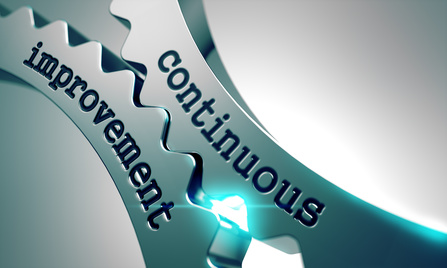I was giving a talk recently and the topic of cycle time reduction came up. It’s a historical fact that after Six Sigma, Motorola took on a very aggressive corporate program to reduce product development cycle time. We used a methodology that set a targeted reduction over a six-year time interval. To set the bar high, we used a ten times reduction, meaning if the baseline was 36 months, the six-year target was 3.6 months. I had the good fortune to be on both sides: first as an engineering leader who drove a program that led to a CEO award, and later in the CTO’s office. In the case of our product engineering program, we were able to massively improve the process by implementing what we would now call automation or expert systems, which allowed many of the routine design choices to be done through modeling. By building robust models that would have previously driven multiple prototype cycles, we were able to remove more than 60 percent of the design time in 24 months.
In my current role, my core work is to help businesses restore vibrancy by using tools that serve the needs of the firm. Many times those firms are best served by looking externally at emerging trends, listening to the voice of the customer and then rebuilding or reframing their offerings accordingly. In some cases, however, their internal processes are job one. That’s when we reach in and select continuous improvement.
Strategy from the Inside Out
Why does continuous improvement lead to strategic change?
Setting a geometrically reducing goal does amazing things. Teams are first assembled to dissect the baseline and zero in on opportunities for improvement. At first, incremental improvements are enough to make good progress, however as the group marches down the time-bound goal, it soon becomes apparent that not only will the constituent parts need to be reduced, but entire links in the process will need to be redone or eliminated.
The truth is that continuous improvement goals create targeted crises that lead to process change.
Through this process, weak links that are holding things back are systematically exposed and hard actions are taken to target thoughtful and creative actions to stay on the curve. One analogy is that a program like this feels like a series of thunderstorms, separated by some relative tranquility. The overarching goal of these engagements is the unrelenting goal line, driving you to be ever more creative in your work.
Internal work like this opens up new capability with a payoff that is always unexpected by the group. In the case of our product development cycle time work, it allowed us a significant edge in market window, allowing the product team to establish a solid learning advantage that was cumulative. Once the internal processes were world class, we could deliver a higher quality product faster than our competition by a wide margin. In a business where margins are thin, having a time advantage created real profits for our customers, and in return, persistent margins for us.
Breaking it Down
So what does it mean and how does the leader of a mid-sized firm get started?
- Most firms have a sense of what their most leveraged processes are. If it’s been some time since you’ve done a business model look at process, that is step one. Most firms have 3-4 key processes that drive 80 percent of the cost and timeline of goods and services. Pick one and establish the best measurement (Usually time, quality or cost). If you’ve installed an ERP system, you have this data already.
- Establish a one-page project charter. Use the business case above, as well as the context of the firm, to lay out a clear path and intention. This will become very important when the first really hard plateau is reached in the program and the team wants to back off.
- Choose a leader for the project (see the posts here, here and here for insight on how to do this).
- Establish two groups, the governance team and the working team. For more on how to do this, look here.
- Look in on the work at regular intervals and take time to think through how to apply the emergent competitive advantage. This may include how to redeploy key talent, establish new products or services, or considering a targeted acquisition to bring into your optimized process.
Creating that right project, assembling the right team and establishing the right plan is hard work, but by taking advantage of all the hard won lessons, you can accelerate your progress. It all starts with a conversation. If you’d like to talk, please click on this link and set up a 20 minute “roll up your sleeves” call with me. Or call my direct line at 847-651-1014.
Related posts you can benefit from…


